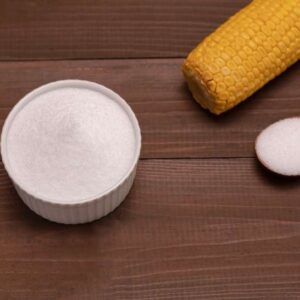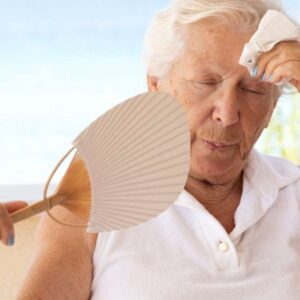
Invisible Microplastics Trigger Serious Health Concerns
We often joke about living in a plastic-covered world these days. But the reality is far more concerning than most realize.
Tiny plastic particles—or microplastics—have infiltrated nearly every corner of our environment, from the deepest ocean trenches to the air we breathe.
And now, alarming research reveals these microscopic menaces aren’t just polluting our planet—they’re infiltrating our bodies and triggering serious health problems.
Let’s examine this growing health threat…
Microplastics—tiny plastic fragments less than 5 millimeters in size—are frighteningly common in our modern world. They come from the breakdown of larger plastic items like bottles, bags, and synthetic clothing.
A groundbreaking study presented at the American College of Cardiology’s Annual Scientific Session uncovered a concerning link between microplastic exposure and chronic diseases.
Researchers found that the more contact you have with these invisible particles, the higher your risk of developing serious conditions, including high blood pressure, diabetes, and stroke.
How do they harm our health? Scientists believe several mechanisms could be at work.
When inhaled or ingested, microplastics can trigger inflammation, particularly in the lungs and digestive tract.
Additionally, many plastics contain harmful chemicals such as phthalates, bisphenols, and flame retardants. These substances can leach out of the plastic particles and act as endocrine disruptors, interfering with hormone function and potentially contributing to conditions like diabetes.
You can’t entirely cut off your contact with microplastics, but you aren’t helpless. Here are some things you can do to reduce your exposure:
- Filter your drinking water using a high-quality water filter designed to remove microplastics. Reverse osmosis systems are particularly effective.
- Avoid heating food in plastic containers, which can increase the leaching of chemicals into your food.
- Choose natural fabrics like cotton, wool, and linen over synthetic materials like polyester and nylon, which shed microplastic fibers.
- Reduce your use of single-use plastics like water bottles, straws, and food packaging.
- Use an air purifier with a HEPA filter to capture airborne microplastics in your home.
- Regularly vacuum with a HEPA-filter to remove microplastic particles from carpets and upholstery.
- Choose fresh, unpackaged foods over heavily processed and packaged options whenever possible.
More research is needed to fully understand the health impacts of microplastics. However, reducing your exposure could be critical to protecting your long-term health.
P.S. Not ready to invest in a water filter for your tap? You can detox your drinking water with this microplastic purging trick.
Source:
Rahul Ponnana, “Microplastic Concentration, Social, and Environmental Features and Their Association with Chronic Disease Prevalence: An Analysis Across U.S. Census Tracts,” American College of Cardiology, Meeting: American College of Cardiology’s Annual Scientific Session. Sunday, March 30, 2025, at 9:00 a.m. CT / 14:00 UTC in Moderated Poster Theater 2.
Written By Dr. Scott Olson, ND
Nearly 25 years ago, failed mainstream medical treatments left Dr. Olson in constant pain – and his health in ruins. And that’s when he did something REVOLUTIONARY. He began his career in medicine – and dedicated his life to uncovering the true, underlying causes of disease.
Through his innovative medical practices in Tennessee and Colorado, Dr. Olson has helped cure countless seniors from across America of arthritis… heart disease… diabetes… and even cancer. All without risky prescription drugs or painful surgeries.
View More Free Articles
Study EXPOSES Hidden Danger Lurking in Your Car
We think of our homes and cars as safe havens. But according to a startling new study, they may be flooding your lungs with microscopic plastic particles—every single day. Researchers in France recently found that adults inhale an average of 68,000 microplastic particles daily from indoor air alone. To put that in perspective, that’s about...
Mailbag: Is Modern Food Making You Snore?
“What can cause snoring, and is there a way to correct this issue?” —Seeking Silence Hi Seeking, Snoring happens when the soft tissues in your throat relax and vibrate as air passes through during sleep. While several factors can cause snoring—from sleep position to nasal congestion—I want to share one trigger that might surprise you....
Simple Food Swap SLASHES Dementia Risk 28%
Let’s be honest… who would jump at the chance to cut their dementia risk by 28 percent. And no, you don’t need to run marathons, survive on broccoli, or learn to play the zither (whatever that is) to make it happen. All it takes is one easy swap—something that’s probably already in your refrigerator. Researchers...
This SMART Floss Exposes Hidden Health Danger
Scientists have created dental floss that doesn’t just clean between your teeth—it also tracks your stress while you’re flossing. Now, I know what you’re thinking… “Great—now even flossing is going to stress me out by telling me how stressed I am.” But this fascinating new tool from Tufts University could be a game-changer for understanding...
Is This "Safe" Sweetener Damaging Your Brain?
The headlines are alarming… “Popular Sugar Substitute Linked to Brain Cell Damage” and “Erythritol Could Damage Critical Brain Barrier” are just two of the dozens I’ve spotted recently. But before you toss every sugar-free product in your pantry, let’s take a closer look at what this study actually shows—and what it doesn’t. The latest research...
This Summer Threat Could SPIKE Your Blood Sugar
Picture this… It’s another scorching hot summer day. You crank up the air conditioning while watching the weather forecast, which predicts yet another “record-breaking” heat wave. It’s starting to feel like just another miserably uncomfortable summer. But what you might not realize is that—if you have diabetes—those rising temps could do far more damage to...
Move Over Yogurt—5 Foods That Pack MORE Probiotics
Let’s talk about your gut. The microbiome is the collection of trillions of bacteria and other tiny organisms that live in and on your body—especially in your gut—and help keep you healthy. I’ve written often about how vital it is to maintain a healthy microbiome. And you might have dutifully added yogurt to your shopping...
Is Your Heart Older Than YOU?
Maybe you feel young for your age. Good energy, decent sleep, eating your veggies. But what if I told you your heart might be a decade older than the rest of you? That’s exactly what researchers at Northwestern University found in a new study published in JAMA Cardiology. The average American woman’s heart is about...
Mailbag: 3-Pronged Attack CRUSHES Diabetes at the Source
“They told me I might have diabetes, so I would like to know how I can battle and eliminate diabetes.” —Fighting Back Hi Fighting, You have the exact right attitude—it will be your best weapon in this battle. Let’s face it, receiving a diabetes diagnosis is disturbing. You’re sitting there, shocked and wondering what it...
7 Natural Ways to Beat Jet Lag and Motion Sickness
Are you trying to squeeze in one last vacation this summer? Maybe it’s a beach getaway, a cross-country flight, or even a cruise. But let’s be honest: nothing takes the shine off a vacation faster than feeling nauseous on a boat… or jet-lagged and groggy for days after a flight. So, let’s talk about how...









